Surf Fishing How To – Tides, Times, Gear, Tips and More!
Surf Fishing in So Cal has new fishing reports/articles every Sunday! blog/reports page
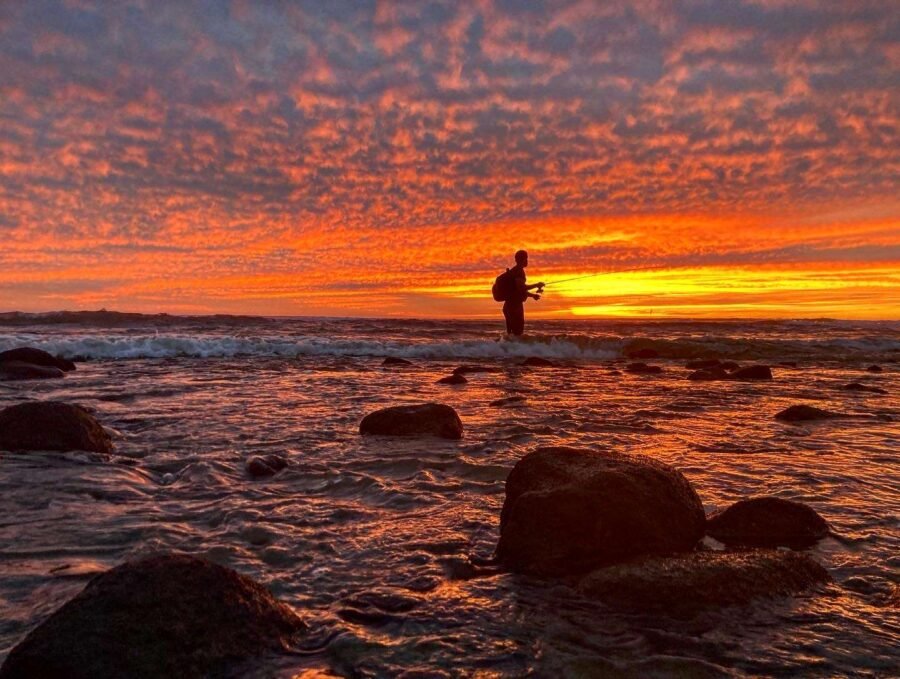
Originally Published 2/9/2019 | Updated 11/12/2023
Looking to start surf fishing? You’ve come to the right spot. This website was built to teach you everything about surf fishing. From So Cal specific knowledge to general surf fishing tips and tricks.
This website is dedicated entirely to surf fishing. Our goal is to provide the best knowledge and education on surf fishing tips, skills, gear, tackle, rods, reels, lures and much more. We’ll talk about the best beaches, common species, best times and tides, reading the surf, and again… much more.
If you’re looking to get a first-hand experience catching leopard sharks or even an epic light-tackle experience, Book a Guided Surf Fishing Trip with Me Today.
Surf Fishing Gear and Tackle You’ll Need
Bottom Line:
- 7-9 foot rod
- 4000 series reel
- 10 to 15-lb line
- Carolina rig or LC lure directly to mainline
My Light Tackle Set-Up
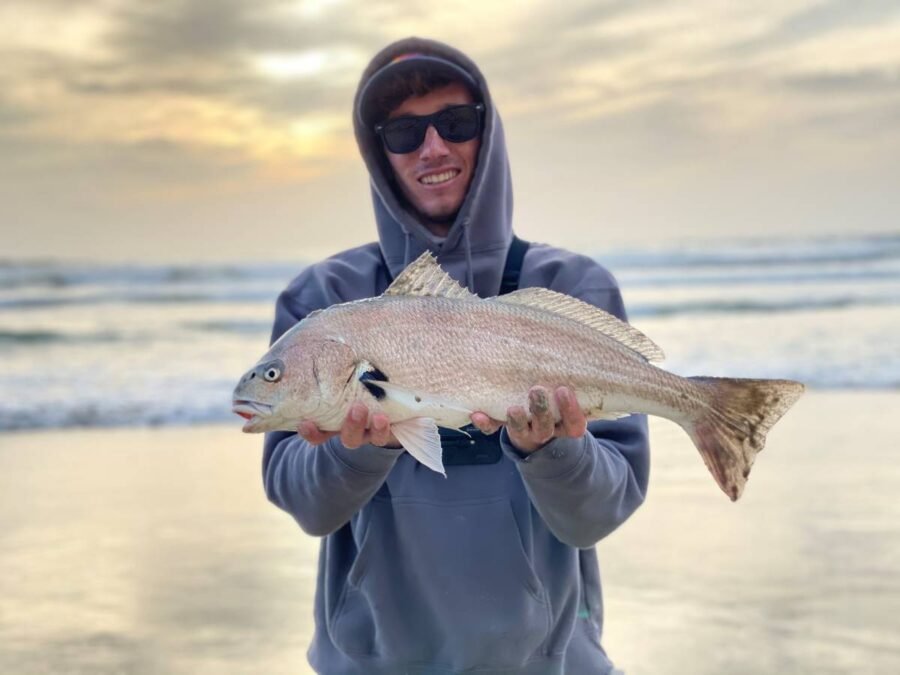
- Rod: Okuma Celilo (8’6″ MA) or the Okuma SST (8’6″ MA)
- Reel: Penn Battle II or III 4000 series
- Mainline: 15-pound monofilament
- For Bait: Carolina Rig:
- Leader Line: 15-pound fluorocarbon
- Swivels: 15-19mm barrel swivels
- Hooks: size #2 or #4 owner mosquito hooks
- Weights: 1-oz egg weight
- Beads: 8mm fishing beads
- For Lures: Lucky Craft FM 110 and Shimano WM 115 SP
- Other best surf fishing rods and best surf fishing reels
My Swimbait Fishing Set-Up
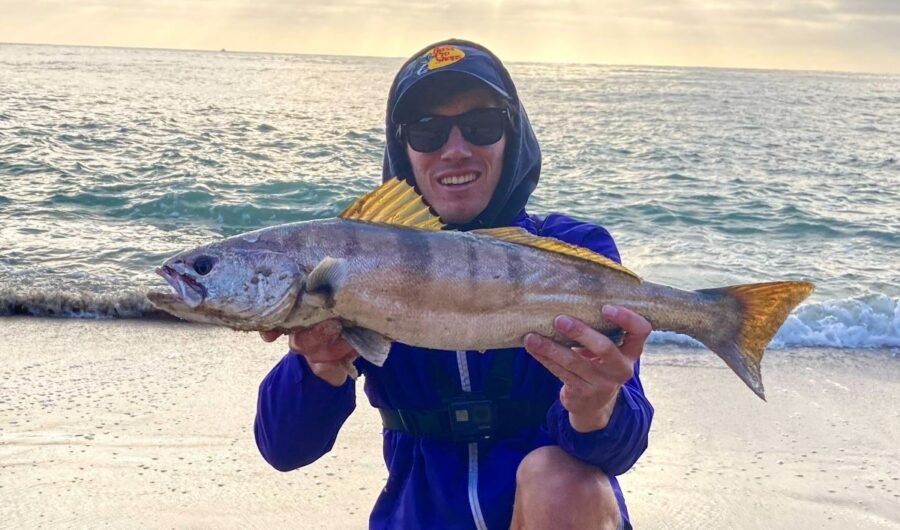
- Rod: Okuma SST-S-902HA – 1/2-2oz | 10-30lb | 9ft | H | MF
- Reel: Penn Spinfisher VI (3500 or 4500)
- Main Line: 30-pound braid
- Leader Line: 30-pound mono
- Lure Options:
- Lucky Craft FM 110 (jerkbait)
- Keitech Fat Swing Impact (4.8″) | Warbaits 0.5-ounce Weedless Jighead
- BioSpawn ExoSwim (4.75″) | Mustad KVD Grip Pin Swimbait Hook (5/0 | 1/8oz) (T Rigged)
Jerkbait Fishing Set-Up
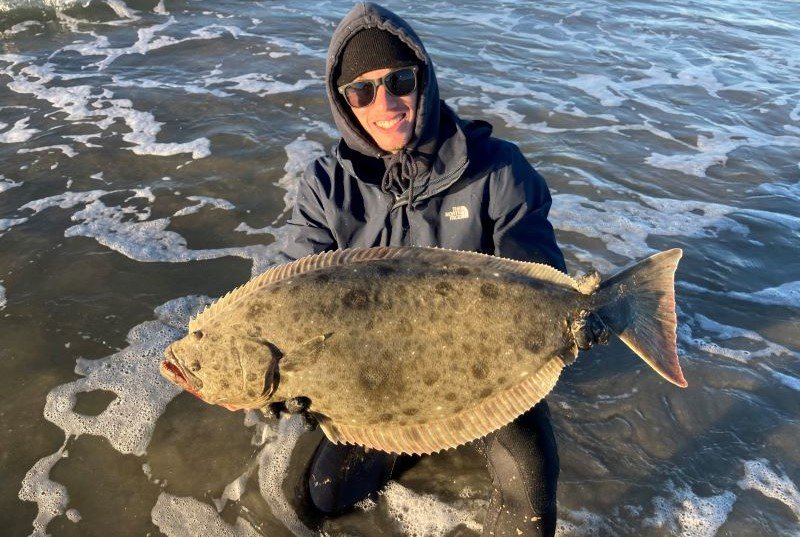
- Rod: Okuma SST (8’6″ MHA)
- Reel: Penn Battle II or III 4000 series
- Main Line:
- Leader Line: 15-pound fluorocarbon
- Lures: Lucky Craft FM 110 and Shimano WM 115 SP
My Shark Fishing Set-Up
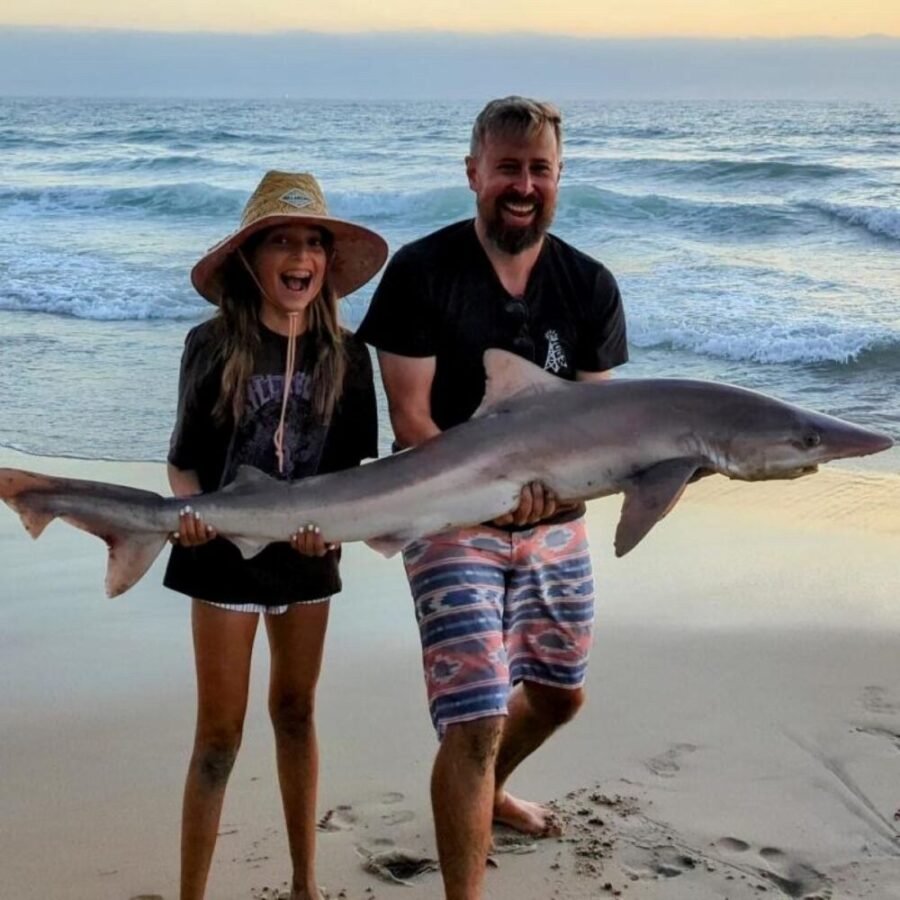
- Rod: Fiblink Moonsniper (12 or 13 feet)
- Reel: Penn Battle 6000 or 8000 (II or III)
- Mainline: 50-pound braid
- Top shot: 100-pound nylon coated mono
- Shark Rig: (Buy Here)
- Hooks: 7/0 Circles
- Swivel: 3-Way Barrel Swivel
- Crimps: AFW #6 Crimps
- Weight: 8-ounce pyramid or 6-ounce sputnik
A lot of time and research went into this website (over 200 articles) and I’m familiar with everything listed. If you have any questions, don’t hesitate to reach out to me.
Another awesome resource for surf fishing is Cast and Spear. Check out Jon Stenstrom’s recommendations for surf fishing gear. Jon is the creator of the popular fishing blog, “Cast and Spear”, and he’s an experienced spear fishermen, surf angler, and offshore angler. In this article, he covers everything from rods and reels, down to your terminal tackle and accessories like hooks, line, pliers, and backpacks.
What To Use For Bait
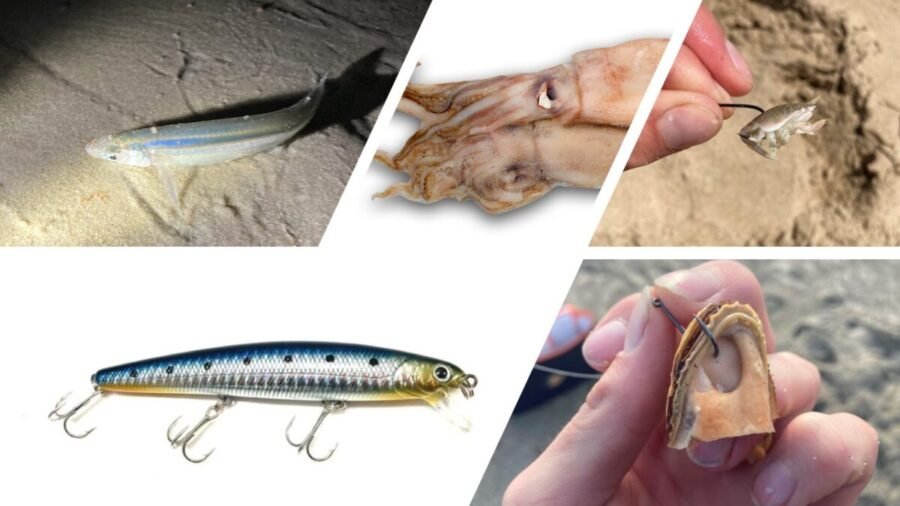
So, you’ve got the gear and tackle part figured out, but what about bait? Well, the best bait for surf fishing is usually going to be live bait or cut bait.
In Southern California, sand crabs are the best bait for surf fishing. Sand crabs will offer you the best shot at catching fish consistently and in large quantities.
Luckily, during the summertime, you can catch sand crabs using a colander or a net, very easily. I’ve taken the time to put together an entire article on surf fishing with sand crabs and I even made a video outlining the process in detail so be sure to check that out.
Some other bait options include mussel meat, squid, anchovy, sand worms, fishbites, etc.
Surf Fishing with Lures
Lures are also an option in the surf. In So Cal, the main targets when fishing lures will be halibut, calico, white seabass, surfperch, and other similar species.
We use a combination of hard plastic and soft plastic lures, but for a comprehensive list and overview, read my article on the best lures for surf fishing and why.
Tips and Tricks
Two helpful links: How To Fish the Surf | How To Read The Surf
Below are some tips and tricks that will up your game and help you to become more familiar with the surf. Practice these tactics a few times as you read the surf and you’ll gain familiarity over time.
We’re going to cover how to spot structure in the surf like troughs, rip currents, scallops, deep pockets and holes and much more. Then we’ll dive into surf fishing tactics that’ll help you target fish with better results.
How to Spot a Rip Current
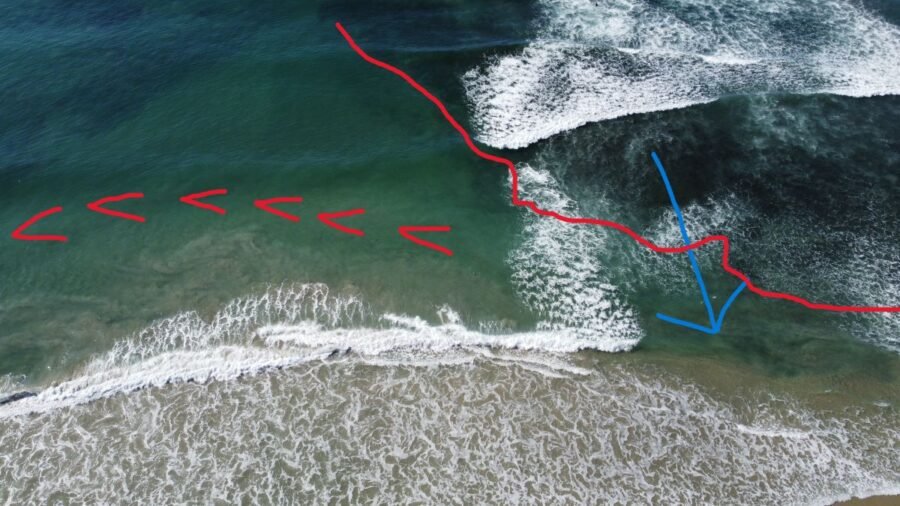
Rip currents are significant in light-tackle surf fishing as the fish follow the bait. A rip current occurs when water initially crashes towards the beach and then begins to recede. As the water recedes, it pulls anything in its general vicinity out deeper.
Often, deeper could mean straight out, or it could mean to the left or right and eventually out deeper, depending on the terrain.
When a strong enough rip current takes its course, sand crabs are pulled out from under the sand and become exposed. Fish will scour these areas waiting for opportunities to feed. You should fish these areas as much as you can!
They’re pretty easy to spot too. Look for areas where sand is churned up and where white water is seen flowing outwards towards the deep.
How to Spot a Trough in the Surf
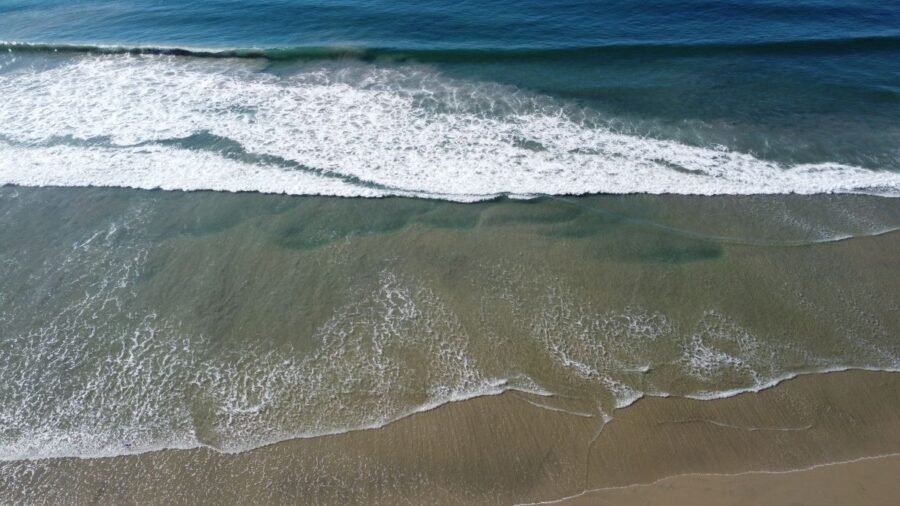
A trough is an indent in the sand that usually continues parallel with the shoreline. Fish will cruise through these troughs looking for food and staying out of sight in some cases.
The most effective way to find troughs and holes is to arrive at the beach at low tide. Here, you can spot the troughs and scallops while they’re still exposed. Then, later on when the tide rises, you’ll have a good idea of where the troughs are and where to fish.
Sometimes you don’t have the time to scout your location but it’s possible to locate troughs while they’re still submerged! The key is watching the water as it recedes. While it’s receding, flat areas will allow the water to flow smoothly back into the ocean uninterrupted.
Even while the wave is headed to shore, you should be able to identify troughs and holes as the white crest of the wave dissipates when it rides over deeper water, creating deeper, cleaner, darker-looking water.
If troughs are present, the water will ride the landscape accordingly as it molds to the sea floor. It will look a bit choppier than the surrounding water. The water will also seem to flow back faster as it dips in and out of the scallop shaped troughs.
If you enjoy the content thus far, be sure to enter your email address in the box below to receive weekly notifications when new fishing reports are published. I’ll let you know what’s biting, and what tactics to use to optimize your chances of catching your dream fish!
How to Spot a Deep Pocket in the Surf

Although most underwater landscape might look similar, deep pockets will show differently. The waves will crash less frequently when riding over a deeper pocket.
The water coloration will hold a deeper blue than the areas around it. It will appear more rippled and in general it’ll look like a really great spot!
It may take some time to familiarize yourself with these tactics for reading the surf, but with time, these skills will likely become second-nature. Remember that every day differs and that structure will fluctuate day-by-day, so don’t get caught up at one spot.
Be prepared to walk up and down the beach in search of a productive spot each day. Sometimes that ‘s the difference between a skunk and good day of fishing, so don’t waste your time!
Surf Fishing Tips
There are so many different aspects that contribute to being a more successful fisherman. It comes down to your ability to put it all together. Learn your structures, study the best times, tides, and conditions to catch fish, and perfect your hook sets!
These are all practices that will undoubtedly help you catch fish. At the same time, I strongly believe that there is one under-rated practice when it comes to surf fishing San Diego. It’s called “sight-casting”.
Sight-Casting
One of the most misconceived notions of fishing the surf is that you HAVE to cast as far as you can. The most common bait found in the surf and even in the stomachs of fish in the surf are sand crabs. These (for the most part) are found in shallow water; even in the sand above the waterline.
So, while there are fish out deeper, the shallows might be a better bet! Look for the backs of corbina, spot-fin croaker, and surprisingly, guitar fish. These fish scour the shallows for sand crabs.
Sometimes you’ll actually witness them beaching themselves! In the shallows, fish will form a v-shape in the water as they search for their pray in the shallows. Sometimes you’ll notice that “v-shape” dart back into the water as they sense the water becoming too shallow.
If you fish the surf in SoCal long enough, you’re bound to have fish run into your feet. Why? Because they scour the shallows for their food… sand crabs!
I actually caught a guitar fish by hand once! It found its way into less than half an inch of water right next to me; my point being, with experience, you should be able to confidently fish the surf in even just inches of water.
Stalking and Placement
Again, corbina, guitar fish, and spot-fin croaker (although Spotfin less frequently) tend to show exhibit this type of behavior. The key to successfully sight-casting is your placement of bait. Ideally you don’t want the fish to know that the bait just showed up.
Stalk your target and get a general sense of direction in which the fish is headed. This way, you can predict where it will be in the next 10 seconds or so. Cast your bait into the projected path and wait. Fish will sense the breakage in water surface if you cast to close to them. More so, they’ll sense your weight hitting the sea floor. So be precise and time your casts accordingly. This is one of the most underrated surf fishing tips you’ll get for surf fishing in So Cal!
If you’re interested in learning more about sight casting and surf fishing, read this article.
Best Time to Go Surf Fishing
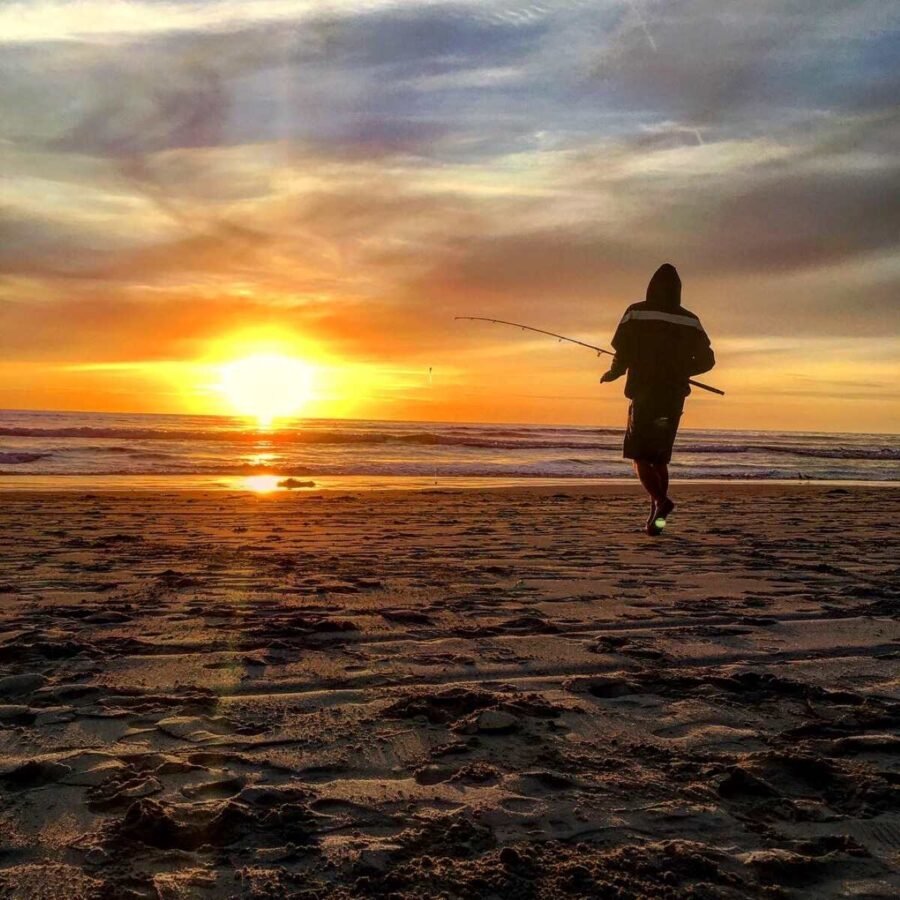
Tides
When it comes to the tides, I’ve caught fish in all sorts of different highs and lows. You’ll hear that you want to fish 2 hours before a high tide and 2 hours after the high tide. In my experience, tides aren’t a “tell-all” predictor of your fishing productivity to come. Aside from that, the tides can affect what parts of the beach are accessible.
If you find that certain spots are productive at different tides, it is important to remember that. Regardless, tides are still important and you should pay attention to the conditions that work best for you. The best tides for surf fishing depend on the conditions, the beach, the structure, and the target. Read the linked article for an in-depth review on the how tides affect surf fishing.
Conditions
If you spend any time on San Diego surf fishing forums, you’ll here a lot about what some people think are the best conditions for surf fishing. There’s a whole lot to consider if you really want to get into it. When the surf is high and/or there happens to be larger differentials in tides, seaweed tends to get churned up and makes a pest of itself. I’ll also tell you that if you plan on fishing for leopard sharks, a medium tide with a minimal differential is ideal. An example would be a high tide of 3 feet with a low of 2 feet.
Times
There’s a lot that goes into explaining the best tides and times for surf fishing. If you’re looking for a detailed explanation that will help you determine the best tides and times when you go out, read the linked article.
I can’t explain tides in one paragraph. In general, the most productive times to fish will be dusk and dawn. Fish will also be much bolder during overcast mornings as opposed to a clear sunny day. All that being said, I hope your San Diego surf fishing experience is the best it can be!
Best Beaches for Surf Fishing San Diego
San Diego has an unparalleled selection of beaches to choose from. If you’re looking to get started, click the link below. I’ve put together a list with detailed reviews about some of the best fishing spots in San Diego.
Every beach is different so when you come to notice and understand the unique characteristics of each one, you’ll be able to target different species with great success. For instance If you want to target Leopard Sharks, between the selection of beaches San Diego has to offer, some beaches will provide a much better opportunity for success. Same goes for Corbina, Spotfin Croaker, Guitarfish, Soupfin Shark, Perch, Halibut and so on. Read up on the link above and if you have any questions at all, don’t hesitate to reach out to me through the contact us page.
Common Species
| Common Species | Peak Season | General Season |
| California Corbina | Jun-Aug | May-Oct |
| Spotfin Croaker | Jun-Aug | May-Oct |
| Yellowfin Croaker | May-Aug | May-Oct |
| Barred Surfperch | Nov-Apr | Year-Round |
| Walleye Surfperch | Nov-Apr | Year-Round |
| Shovelnose Guitarfish | Jun-Aug | May-Oct |
| Sting Ray (Round Ray) | Jun-Aug | Year-Round |
| Bat Ray | Jun-Aug | Year-Round |
| Leopard Shark | May-Aug | Apr-Oct |
| California Halibut | Jan-May | Year-Round |
| Soupfin Shark | Mar-Jul | Year-Round |
The above is a list of the common species you can catch while surf fishing in San Diego. When fishing the surf, most fish can be caught year round, but there are general seasons and peak seasons in which your chances are better.
The best time of year for surf fishing in SoCal is usually summer for the majority of fish, but there are exceptions! Keep in mind that this list is not exhaustive, but click the hyperlink for each species to learn more about fishing tactics and species tendencies.
Surf Fishing Rods
Your surf rod may be the most personalized item in your arsenal. So do some digging before you buy. Here’s my in-depth review of the best surf fishing rods and why. Make sure you purchase the correct rod in the specs I recommend.
Reels for Surf Fishing
Your surf reel, although not as personalized as your rod, might be the most expensive item in your arsenal. So again, do your research and check out my article on the best surf fishing reels and why. I list the best specs for each type of surf fishing and I’m always available if you need advice.
Subscribe Below!

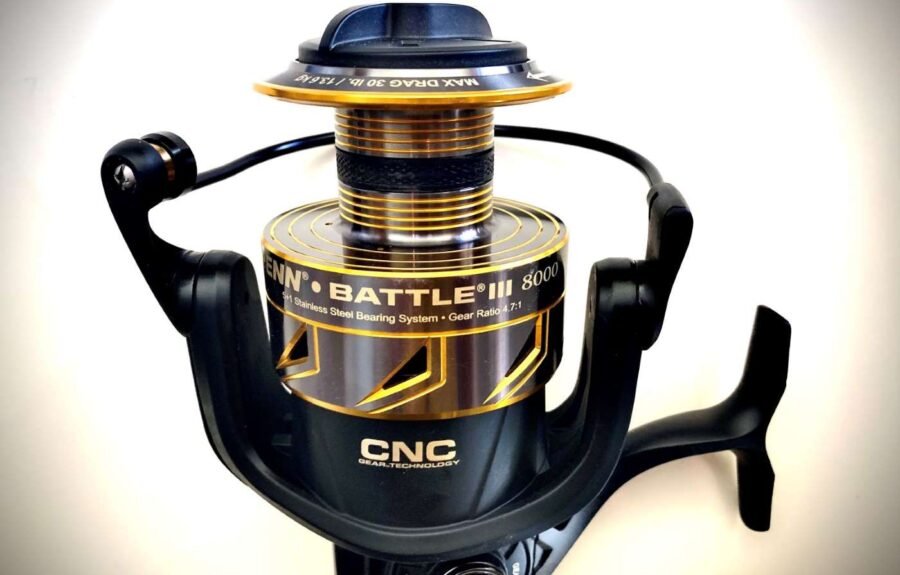
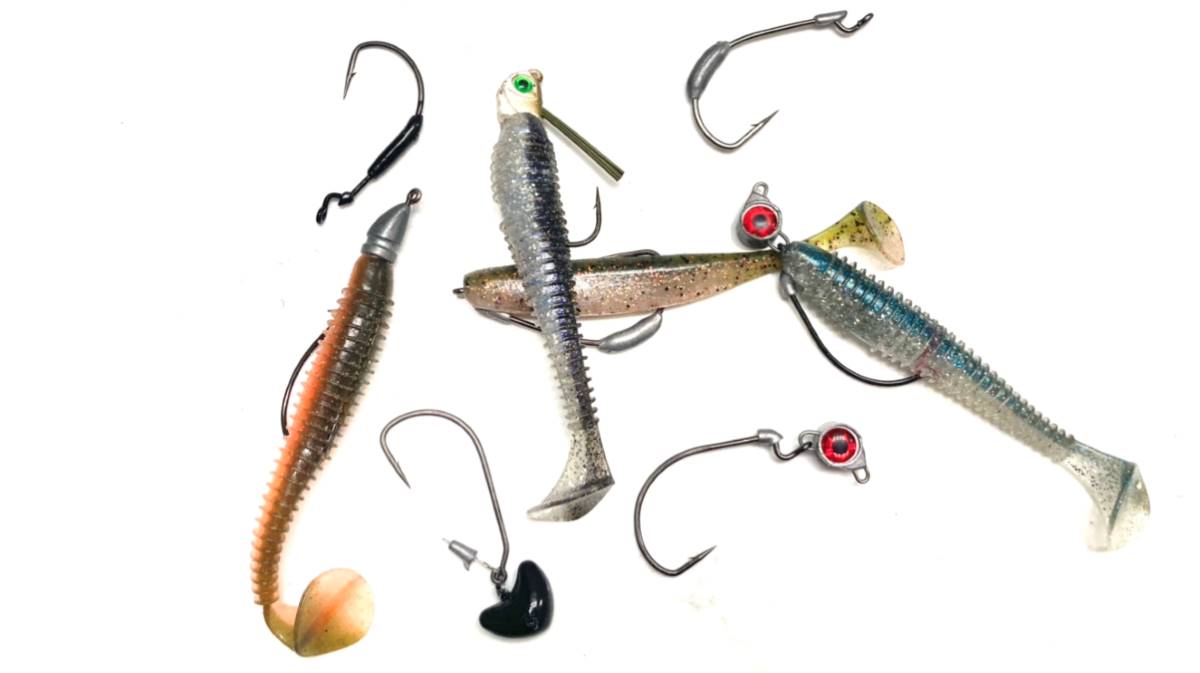

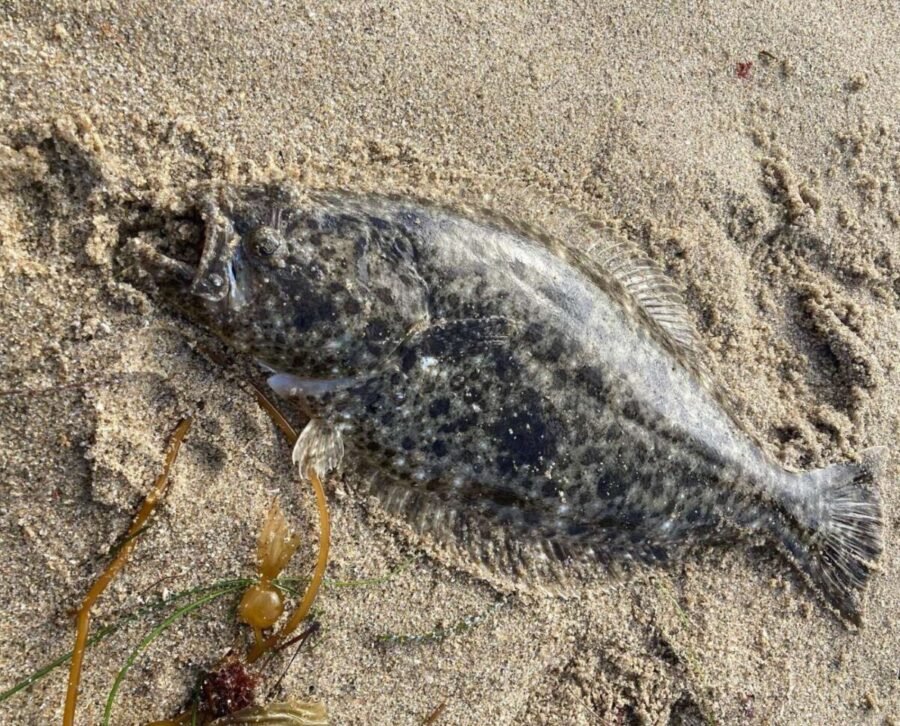
Really great information really great website unfortunately I fish Orange county down to San Diego much but I’m going to try thank you
Thanks Yancy. Everything in this website should be applicable all the way through LA. I’ll be expanding my info specifically on beaches in Orange County soon too
Can you use bait cannons in calf.
I don’t see why not but I haven’t checked at all.
I’m in Redondo Beach and have used your methods and advice over the last few years for lite line in the surf, great stuff!
Thanks, Jonathan! Hope you keep slayin!!
I’m in San Diego and wondering what beaches you can fish and what locations thanks for any info
This page should have just about every thing you’re looking for: http://surffishingsocalsd.com/best-surf-fishing-spots-in-san-diego/
The Owner Mosquito #4 hooks are surprisingly small especially compared to my Gamakatsu #4 Octopus hooks. I would guess #2 Owner Mosquito is like a Gamakatsu #4 sized hook. I will give the Mosquito hooks a try this Saturday.
They do the trick for me! I’ll switch between the 2a and 4s just on personal preference and feel
Hey Nick, Nice sharing knowledge with you yesterday at San O…..Michael
Hey Michael! Glad you found the site and it was a pleasure sharing the sand with you. Thanks for all the local knowledge.
I fished closer to the trail as the day was ending and I got a 17 inch spotfin on mussel
Heck yah man!
Thanks for all the advice! Got my first cortina of the season Monday in Ventura! My buddy also got one.(mine was bigger lol). A kid got one last week at Marina Park. Looks like July is going to break wide open…
I think so too! This is the best time of year.
Hey Nick, thanks for the best fishing trip to date. Dana and I had an awesome time. I truly appreciate the time you spent showing us the ropes. I recommend to anyone who wants an awesome and informative guided session, book with Nick, you won’t be disappointed!! Thanks again for the great day!!
Thanks, Michael! A appreciate the kind words and had an awesome time with he two of you.
Thanks for all the knowledge! got a small corbina on Monday (8in) lol… but today persistence payed off! Got two nice ones, big one about 20 in… looks like I’ll be there this Monday (up in Ventura area)
Heck yah! Time on the sand is the best way to learn.
Ventura report: Today was a tough day, only a few perch, leader was getting knots, weeds….finally, just after high tide got a corbina My buddy got 2 corbiinas. Will be going home (San Diego) for a few days and will try to get out Friday. Thanks!
Thanks for the report!
Friday got a nice yellowfin croaker. Ventura water was cold, got a 20”and a big barred, biggest in years…Had a bite while reeling in (wasn’t expecting it) took some drag then I pulled the hook. I’ll be ready next time!
Dang! Sounds like an awesome session and one that’ll keep ya comin back.
I’ll be at Chrystal pier mid September and want to surf fish with artificial lures. Any suggestions/ hints on colors and techniques ?
I’d probably go with a lucky craft flash minnow 110. Zebra sardine, pearl white, or anchovy
Thank you
Hello, I love this page, it is so cool that you guys do that, couple of days before broke my rod, and been looking at a new surf rod. With your recommendation I want to buy a fiblink moonsniper. But I am not sure about the size of the rod. I know that you recommended the 12-13 foot rod for the beach fishing. But I would really love to use this rod in fresh water or pier fishing. What size would you recommend in this case. I am afraid that 12 foot rod would be gigantic for freshwater fishing. But I want to use this rod on surf too.
10-foot moonsniper – replied already
Report from way up north… started at Refugio State Beach got out of the car to see lots of sea weed. One guy was setting up, said no fish last night just weeds. We got in our car south to El Capitan Beach, less weeds! Great place, must of had 6+ Barred Pearch over a pound. Saw some Corbina in the shallows and my buddy snagged one. He also got a 15” baby Leopard Shark. Definitely going back!
wow! Awesome session!
Ventura report, Monday fished in between the jettys and got 4 big surf Perch plus some Little ones, a small walleye by the rocks. The cooler water temps are bringing in the bigger Perch.
Awesome news! I’m seeing the same down here in SD.
This year and last year, November in Mission Beach with 2″ Gulp sandworms (camo color) seem to do great with the barred and walleye. Can hardly feel all but the bigger ones, but fun to reel something in on more casts than not!
Always a good time!
Ventura report, great day today started with a nice yellowfin croaker, then a tiny perch, as the tide came up moved on the jetty and started getting rubber lip and walleyes (10 total) and the biggest perch in my lifetime… about 18” pile perch. My buddy did just as well with his large pile perch. (Best day so far for 2022)
18-inch perch!?!?! That’s massive!
Nick, I’ve used your suggestions and advice to get back into surf fishing after about 25 years. It’s been a thrill and despite my inability to land fish, I’ve thoroughly enjoyed being on the beach, speaking with other fishermen. Thank you.
I was also wondering about rock fishing from the shore. Do you have any suggestions on rod and reel? Baits? Maybe a solid website you trust?
I’ve looked around and there isn’t a consensus, so I thought I’d check in with you, the SoCal surf fishing oracle. If you have any advice, I’m all eyes.
Thanks!
Hahaha thank you for the compliments but I’m here to learn too. When you say “rock fishing”, are you referring to using bait in really rocky areas? If so, I would use something very similar to what I’m using for lures right now in my Okuma SST. The Okuma Rockaway is solid too. Bottomline get something rated for between 2-6 oz and between 15-40lbs around 9-12 feet and I’d stick with the Penn Spinfisher and go either 4500 or 5500 maybe 6500 if you really want. that’s just me though. I know the two brothers at https://www.californiasurffishing.net/ might have some advice too.
By “rock fishing” I mean fishing from the shore while standing on rocks and casting your bait/lure into rocky areas. So you are not casting from the sandy beach and into the surf, you are on rocks, casting around rocks and will retrieve your line in very rocky areas.
Yes, then all the advice in my previous repsponse applies in terms of a rod and reel. I would encourage you to also read Gary Kazazian’s book “California Surf Fishing: The Hunt for Big Fish“. It’s a comprehensive guide on fishing for larger predatory fish from and near rocks (same methods apply). He talks about lure fishing in rocks as well as bait fishing in rocky areas. Check it out and let me know what you think or if you have any follow up questions.
Thank you Nick. Your willingness to share your knowledge is unexpected and deeply appreciated. You rock (fish)!
Ahhh. Too funny! Thanks for the support!
Nick, what a trip! This is my favorite experience in California to date. I can’t thank you enough. Of all of the fish we caught, a big Leopard Shark from the surf is “Bucket list” stuff for sure.
Tim! It was a pleasure fishing with you! Super glad you got made it down and we were able to make it happen.
Glad you got the comments working again Nick, that way you know I’m still following
Thanks Verne!
Hi Nick, love your site and all the tips you give. I’ve been away from fishing for awhile and starting to get the bug again. Awesome site.
Thank you! Best of luck out there!
Nick,
Quite a good job. Have a question:
I found a .com site that had great beach and weather information and predicted quality of potential surf fishing from 1 to 100.
Forgot to note the site. Do you know it?
Howard
Stinson Beach
If it’s fish notify, I’m not a fan. Atleast not yet. I don’t think you can truly rate a spot/beach per day unless you know exactly what you’re fishing for.
Hi Nick! I live in Huntington Beach and your webpage got me interested in surf fishing this year and has been extremely helpful in getting gear, bait, and fishing suggestions.
I have learned a lot and caught a lot mostly on sand worms and lures, since the crabs are not as plentiful here. Lots of stingrays here, what waders would you recommend for protection? Also, how much more would you charge to come up to H.B to guide for me? Would like to target Corbina.
Thanks Jim
Hey Jim! As for the waders, these are the ones I can speak on…
http://surffishingsocalsd.com/best-waders-for-surf-fishing-types-brands-and-more/
As for a guided session up in HB an extra $50 for the added mileage would do just fine. Let me know if you’re interested and good luck out there!
Glad to have found this site with all the info!
Will be in Santa Barbara from Jan thru April and would like to know some surf casting and or pier spots to fish. I’m from Cape Cod and an avid fisherman and looking forward to fishing CA. Thx
Also if there is anyone that can help me out in Santa Barbara area I can reciprocate with some great Cape Cod fishing if you ever come to east coast!
Do you have any reccos for beginner reel and rod setups? Want to try getting into it this summer but don’t want to invest a huge amount in case the hobby doesn’t stick.
Here’s my article on that… https://surffishingsocalsd.com/best-budget-surf-fishing-rod-and-reel-combos/